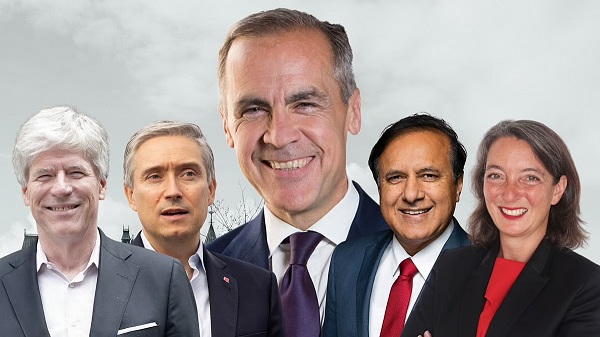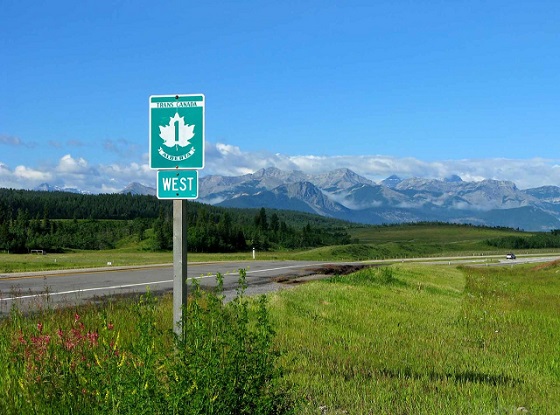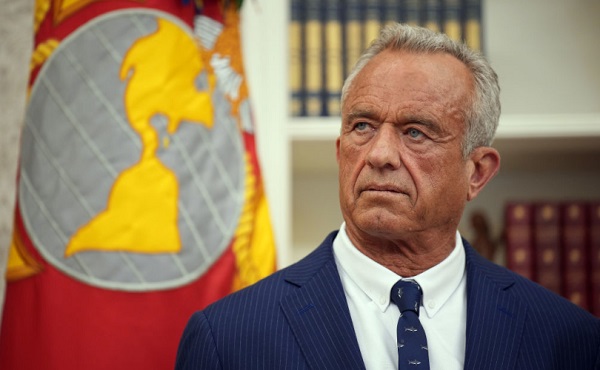Business
No Ministers, No Progress, Opposition Corners the Liberals in Ottawa

Conservatives and the Bloc demand cabinet face the hot seat before C-4 moves forward and open an investigation into offshore billions
Here’s the story. The Liberals jammed through their so-called affordability bill, C-4. And they didn’t wait for debate. Instead, they used a procedural shortcut called a Ways and Means motion. What does that mean? In Ottawa, a Ways and Means motion is the tool the government uses to make tax changes legally binding the moment the motion passes in the House of Commons even before the bill has gone through committee hearings or votes in Parliament.
So right now, the tax hikes, credits, and changes in C-4 are already in effect. Canadians are paying under these rules today. Yes, MPs on the Finance Committee are “studying” the bill, they’ll hold hearings, hear witnesses, and go through it line by line in what’s called clause-by-clause review. That’s normally the stage where MPs can debate and amend legislation. But with C-4, it’s happening after the fact.
Think about that. Implementation first, scrutiny later.
But this week, the opposition finally said: enough. Conservatives and the Bloc forced a new rule: no clause-by-clause until the ministers show up. Finance, Housing, Environment. One hour each. Separate panels. No ministers? No progress.
Why did they have to do this? Because the government has been stalling for months, refusing to commit to dates. Instead of ministers showing up in person, Liberals kept offering up everyone but the actual decision-makers, deputy ministers, senior bureaucrats, even departmental staff. The excuse? The ministers were “busy” all summer on so-called budget consultations which mostly looked like taxpayer-funded travel and photo-ops. Bloc MPs literally laughed when Liberal MP Ryan Turnbull tried to pass that off as a defense. And they were right to laugh.
For once, bureaucrats don’t get to hide behind their bosses’ schedules. The ministers themselves now have to sit in the hot seat, face MPs directly, and explain their decisions.
And it gets better. The committee also voted to launch a probe into offshore tax havens, the globalist money-laundering operations where billions vanish every year while small businesses get crushed by CRA audits. Remember the Panama Papers? The Paradise Papers? We learned then that Canada’s so-called revenue agency cut sweetheart deals with the rich, let corporate giants off the hook for billions, while squeezing ordinary taxpayers for every penny. Well, now Parliament is going to drag this into the light. Six meetings minimum. Finance officials. CRA brass. The Parliamentary Budget Officer. Even law-enforcement experts in financial crime. Imagine that… accountability.
And of course, the Liberals tried to stall it. They buried language in the motion that said the tax-haven probe could only begin “after the conclusion” of the affordability study, code for months of delay while ministers played hide-and-seek with their schedules. Why would they want that? Think about it: this is the same government hinting at cuts, floating austerity, telling Canadian public sector to brace for restraint. Yet at the same time, they show zero urgency in chasing down up to approx. $50 billion a year leaking into offshore tax shelters. Why on earth wouldn’t they want to plug that hole before they slash programs or raise taxes? But the opposition caught it, ripped it out, and forced a rewrite: the tax-haven study runs at the same time as C-4. No more excuses.
So what does this tell you? It tells you two things. First, the Liberals will rig process any way they can to avoid scrutiny, implement first, answer questions never. And second, when opposition MPs actually use the tools at their disposal, the swamp can be forced to act. Billions are at stake. Billions that should be lowering your taxes, funding real infrastructure, protecting Canadians instead of vanishing into shell companies in Barbados.
So the question is simple: will this committee have the courage to follow through? Or will the Liberals and their media allies smother it in delay and jargon until the public forgets?
One thing’s for sure: the smell of panic is back in Ottawa. And for taxpayers who’ve been bled dry while watching global elites hide their fortunes offshore, that’s very good news.
Subscribe to The Opposition with Dan Knight
I’m an independent Canadian journalist exposing corruption, delivering unfiltered truths and untold stories.
Invite your friends and earn rewards
If you enjoy The Opposition with Dan Knight , share it with your friends and earn rewards when they subscribe.
Business
What Pelosi “earned” after 37 years in power will shock you

Nancy Pelosi isn’t just walking away from Congress — she’s cashing out of one of the most profitable careers ever built inside it. According to an investigation by the New York Post, the former House Speaker and her husband, venture capitalist Paul Pelosi, turned a modest stock portfolio worth under $800,000 into at least $130 million over her 37 years in office — a staggering 16,900% return that would make even Wall Street’s best blush.
The 85-year-old California Democrat — hailed as the first woman to wield the Speaker’s gavel and infamous for her uncanny market timing — announced this week she will retire when her term ends in January 2027. The Post reported that when Pelosi first entered Congress in 1987, her financial disclosure showed holdings in just a dozen stocks, including Citibank, worth between $610,000 and $785,000. Today, the Pelosis’ net worth is estimated around $280 million — built on trades that have consistently outperformed the Dow, the S&P 500, and even top hedge funds.
The Post found that while the Dow rose roughly 2,300% over those decades, the Pelosis’ reported returns soared nearly seven times higher, averaging 14.5% a year — double the long-term market average. In 2024 alone, their portfolio reportedly gained 54%, more than twice the S&P’s 25% and better than every major hedge fund tracked by Bloomberg.
Pelosi’s latest financial disclosure shows holdings in some two dozen individual stocks, including millions invested in Apple, Nvidia, Salesforce, Netflix, and Palo Alto Networks. Apple remains their single largest position, valued between $25 million and $50 million. The couple also owns a Napa Valley winery worth up to $25 million, a Bay Area restaurant, commercial real estate, and a political data and consulting firm. Their home in San Francisco’s Pacific Heights is valued around $8.7 million, and they maintain a Georgetown townhouse bought in 1999 for $650,000.
The report comes as bipartisan calls grow to ban lawmakers and their spouses from trading individual stocks — a move critics say is long overdue. “What I’ll miss most is how she trades,” said Dan Weiskopf, portfolio manager of an ETF that tracks congressional investments known as “NANC.” He described Pelosi’s trading as “high conviction and aggressive,” noting her frequent use of leveraged options trades. “You only do that if you’ve got confidence — or information,” Weiskopf told the Post.
Among her most striking trades was a late-2023 move that allowed the Pelosis to buy 50,000 shares of Nvidia at just $12 each — less than a tenth of the market price. The $2.4 million investment is now worth more than $7 million. “She’s buying deep in the money and putting up a lot of money doing it,” Weiskopf said. “We don’t see a lot of flip-flopping on her trading activity.”
Republicans blasted Pelosi’s record as proof of Washington’s double standard. “Nancy Pelosi’s true legacy is becoming the most successful insider trader in American history,” said RNC spokesperson Kiersten Pels. “If anyone else had turned $785,000 into $133 million with better returns than Warren Buffett, they’d be retiring behind bars.”
Business
Ottawa should stop using misleading debt measure to justify deficits

From the Fraser Institute
By Jake Fuss and Grady Munro
Based on the rhetoric, the Carney government’s first budget was a “transformative” new plan that will meet and overcome the “generational” challenges facing Canada. Of course, in reality this budget is nothing new, and delivers the same approach to fiscal and economic policy that has been tried and failed for the last decade.
First, let’s dispel the idea that the Carney government plans to manage its finances any differently than its predecessor. According to the budget, the Carney government plans to spend more, borrow more, and accumulate more debt than the Trudeau government had planned. Keep in mind, the Trudeau government was known for its recklessly high spending, borrowing and debt accumulation.
While the Carney government has tried to use different rhetoric and a new accounting framework to obscure this continued fiscal mismanagement, it’s also relied on an overused and misleading talking point about Canada’s debt as justification for higher spending and continued deficits. The talking point goes something like, “Canada has the lowest net debt-to-GDP ratio in the G7” and this “strong fiscal position” gives the government the “space” to spend more and run larger deficits.
Technically, the government is correct—Canada’s net debt (total debt minus financial assets) is the lowest among G7 countries (which include France, Germany, Italy, Japan, the United Kingdom and the United States) when measured as a share of the overall economy (GDP). The latest estimates put Canada’s net debt at 13 per cent of GDP, while net debt in the next lowest country (Germany) is 49 per cent of GDP.
But here’s the problem. This measure assumes Canada can use all of its financial assets to offset debt—which is not the case.
When economists measure Canada’s net debt, they include the assets of the Canada Pension Plan (CPP) and the Quebec Pension Plan (QPP), which were valued at a combined $890 billion as of mid-2025. But obviously Canada cannot use CPP and QPP assets to pay off government debt without compromising the benefits of current and future pensioners. And we’re one of the only industrialized countries where pension assets are accounted in such a way that it reduces net debt. Simply put, by falsely assuming CPP and QPP assets could pay off debt, Canada appears to have a stronger fiscal position than is actually the case.
A more accurate measure of Canada’s indebtedness is to look at the total level of debt.
Based on the latest estimates, Canada’s total debt (as a share of the economy) ranked 5th-highest among G7 countries at 113 per cent of GDP. That’s higher than the total debt burden in the U.K. (103 per cent) and Germany (64 per cent), and close behind France (117 per cent). And over the last decade Canada’s total debt burden has grown faster than any other G7 country, rising by 25 percentage points. Next closest, France, grew by 17 percentage points. Keep in mind, G7 countries are already among the most indebted, and continue to take on some of the most debt, in the industrialized world.
In other words, looking at Canada’s total debt burden reveals a much weaker fiscal position than the government claims, and one that will likely only get worse under the Carney government.
Prior to the budget, Prime Minister Mark Carney promised Canadians he will “always be straight about the challenges we face and the choices that we must make.” If he wants to keep that promise, his government must stop using a misleading measure of Canada’s indebtedness to justify high spending and persistent deficits.
-

 Alberta2 days ago
Alberta2 days agoTell the Province what you think about 120 km/h speed limit on divided highways
-

 Energy17 hours ago
Energy17 hours agoThawing the freeze on oil and gas development in Treaty 8 territory
-

 Alberta2 days ago
Alberta2 days agoAlberta’s number of inactive wells trending downward
-

 National1 day ago
National1 day agoNew Canadian bill would punish those who deny residential indigenous schools deaths claims
-

 Business2 days ago
Business2 days agoBill Gates Gets Mugged By Reality
-

 Business17 hours ago
Business17 hours agoWhat Pelosi “earned” after 37 years in power will shock you
-

 Health1 day ago
Health1 day agoRFK Jr. urges global health authorities to remove mercury from all vaccines
-

 Censorship Industrial Complex2 days ago
Censorship Industrial Complex2 days agoSchool Cannot Force Students To Use Preferred Pronouns, US Federal Court Rules








